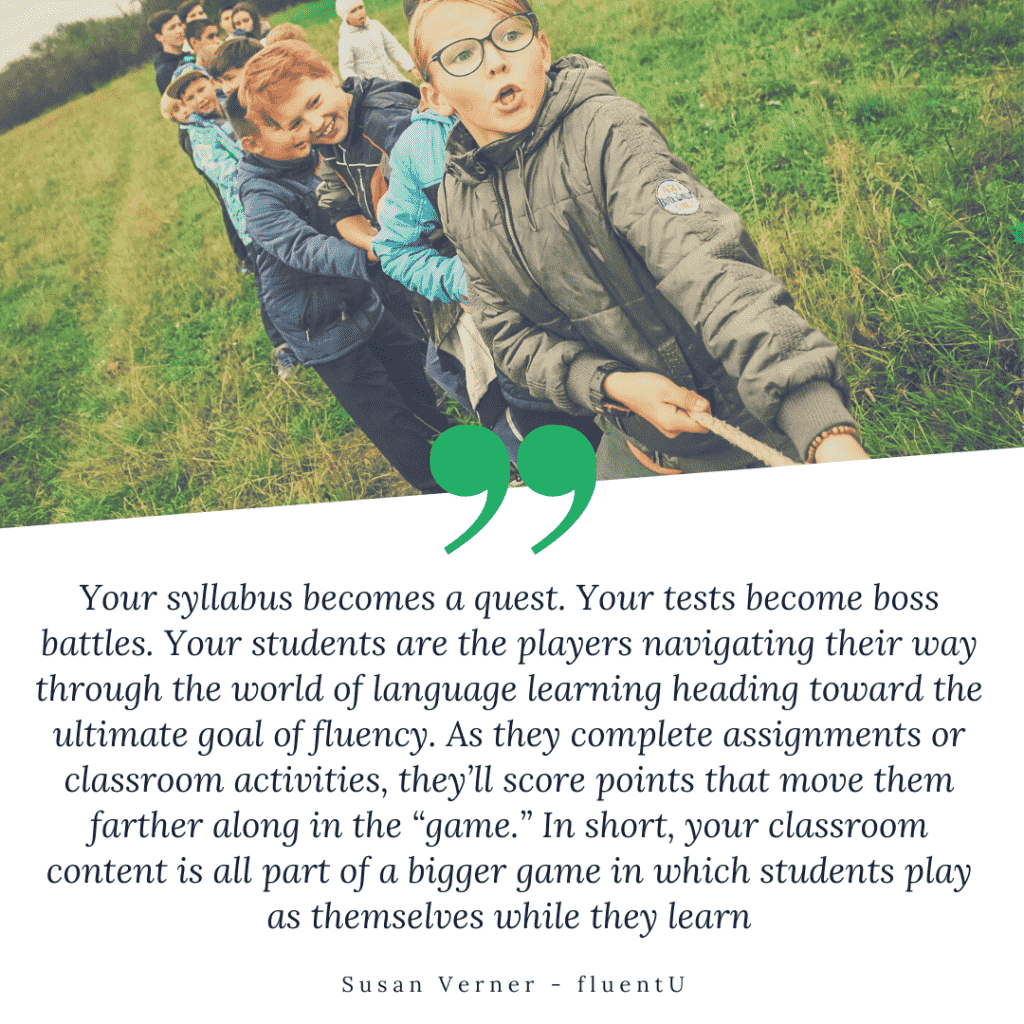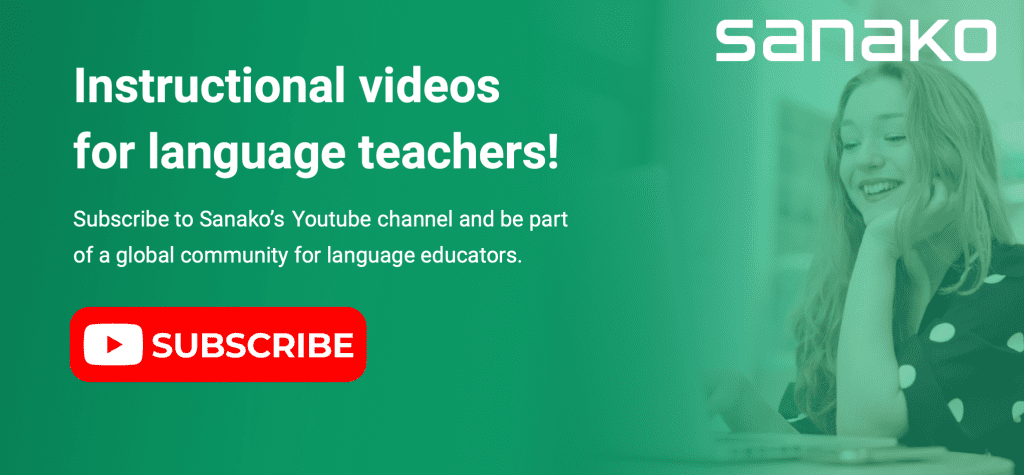Gamification is a relatively new pedagogical teaching strategy that has developed with fast technological improvements and new online teaching tools. When we are talking about gamification we refer to a game-based teaching and learning method that could include different traditional board games or online gaming elements integrated into pedagogical educational activities. In this blog post we will explore how gamification can be applied to language teaching.
However, the idea of gamification is not only about adding a game or two to your lesson plan. In fact, It’s about turning the whole learning process into a game and making your language classroom a more engaging learning environment for your students.

Why is gamification an effective language teaching strategy?
According to Michos (2017), playing a game and learning a language share similar elements, because they are both goal-oriented activities that include processes such as mastering the structured and standardised rules and developing skills to reach a certain goal. This actually makes the two quite easily combinable, so applying a gamified teaching method is not as laborious as it may first sound.
The main advantage and value that gamification adds to foreign language learning is, in short, the element of FUN and increased student engagement. Gamification simply makes learning more fun because nobody can deny the fact that everyone loves games. Therefore, gamification is an extremely effective way of motivating your students and encouraging them to participate and do their best in every class.
Here you can find a list of advantages that gamification brings when it is incorporated in foreign language teaching. This list has been created by Michos (2017), who has focused her research specifically on gamification and foreign language teaching:
Gamification…
- modifies the mood within the classroom;
- increases learners’ feeling of happiness;
- provides breaks from learner’s fatigue;
- increases motivation and improves attention;
- increases student’s engagement in the classroom activities;
- stimulates a goal-oriented activity;
- makes learning fun.
3 practical tips on how to apply gamification into language teaching
1. Design gamified exercises around your current teaching objectives
To fully benefit from the gamified exercises and experiences, always create them with your current teaching objectives in mind. It’s easy to get sidetracked with new ideas and therefore you should think about games as a way to achieve what’s in your current plan instead of changing the underlying teaching plan. Each game should always serve a purpose. What do you want your students to learn in the outcome?
2. Create an awarding system and track students’ points
Gamification adds a whole other level of motivation and excitement to every task when you have created an awarding system to track students’ points. Doing well in a task means scoring points and moving up in the game. Consequently, this keeps your students focused and maximizes their interaction with the target language.
3. Involve students in the brainstorming process and address their individual needs
Applying gamification to your teaching requires some creativity and open-mindedness. However, if you feel like running out of inspiration, involve your students in the brainstorming. They have plenty of ideas when it comes to games because that’s what they love to spend their free time on. Furthermore, having personalized tasks is important in order to address students’ individual needs, skills, areas of interest, etc.
Are you a language teacher and looking for lesson ideas or practical tips on how to apply different pedagogical ideas into your language lessons? Subscribe to Sanako’s Youtube channel and join a global community of language educators! Get tips and ideas on how to incorporate the latest technological innovations into your language classroom.
References used in this article:
Michos, M. 2017. Gamification in Foreing Languages – Do you Kahoot? Modern Technologies in Language Learning.
Verner, S. FluentU. Be a Top Scoring Teacher with Language Learning Gamification.


